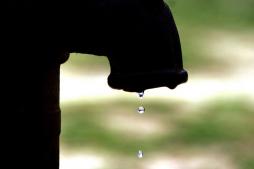Water is becoming one of the most contested resources in the world as populations increase and the availability of fresh water decreases. MobileActive spoke to the team behind NextDrop, an organization that uses mobile technology to monitor water flow in urban India.
Designed by a team of Berkeley and Stanford graduate students, the idea for NextDrop came out of a class at Berkeley's School of Information on how to use information technology for sustainable development. A group of students wanted to track intermittent water supplies in India. NextDrop was born. Ari Olmos, one of the team members running NextDrop, explains, “There was an opportunity to use information technology to improve the situation and create a schedule and feedback loop.”
At the end of the fall of 2009, NextDrop won a grant from the Gates Foundation and the group decided to test the project in the field (the group has continued to win grants and competitions since then, so far raising $40,000 to fund the project). In July of 2010, the pilot officially launched in the city of Hubli, India. It is still ongoing with the participation of the Hubli-Dharwad Water Board and local residents.
Olmos explains that NextDrop chose Hubli, a city with a population of more than one million, for the pilot because of a high level of openness to innovation in the region and the presence of The Deshpande Foundation, a partner organization. According to Olmos, "this issue of unreliable water supply is pronounced there – you have a rotational schedule where water is supposed to come every four days, but in practice it's coming about every six days in blocks of three to six hours. So it seemed like a place that had a need for our kind of service, and there were some good partners there in the utility and the foundation."
Adapting to Local Needs
The program has evolved since its launch nine months ago. Originally, users notified NextDrop with an SMS when water was flowing; after the information was verified, the submitters would be rewarded with a micro payment in the form of a phone credit and an update was sent via SMS to all other participants telling them the water was flowing. However, along the way the organization has modified the project. For example, Olmos says that the group had to adjust the means of data collection once the project was deployed on the ground. He says, "When we went last summer, we expected this whole system to work very smoothly with just SMS, and we thought we could crowdsource entirely through SMS. And it turned out to be substantially more difficult then we thought – we found that getting people to write messages with a really specific code to report what was going on and to respond to what was happening was very difficult. So we switched to an interactive voice-based system, and it seems like that's a better way to input information. However, we are still using SMS to send out updates."
Berkeley graduate student Thejovardhana Kote designed the web framework of NextDrop using Django, while the IVR system was incorporated using KooKoo. The SMSs are free for users to receive, as are the IVR calls. The text message updates are in English, but Olmos says “they're relatively light in actual language," as they only tell users if the pump is on or off and for how long. The IVR announcements are in Kannada, the predominant local language.
In addition to incorporating voice, NextDrop has now partnered much more closely with the local water utility company. The team initially worked with the Hubli-Dharwad Water Board to access information about local valves, but in January 2011, they moved on to a new phase of the project – partnering with the utility to gather and share more real-time data. Explains Olmos, “Now we're relying more on the utility to give us the information, and the reason is that we would like to provide advance notice – that's really been our goal all along. To figure out a way to tell people in advance [about water availability or disruptions], and through working with local employees we can get notice when they open the valves."
Although much of the information is still crowdsourced from residents (the pilot initially launched with 180 participating families spread among five water valve districts in Hubli), as the project expands there will be a greater focus on incorporating in data from utility employees. By mid-April, NextDrop aims to have four more valves covered by the system, this time through reports from utility employees. The new phase focuses on mapping data and uses Google Maps to visualize the city’s water infrastructure. Olmos says, “If the valve is open, we can track that when an employee calls into the IVR system – the map will indicate that response. [It’s] also built in to track when things get off schedule. If the valve is off when it's supposed to be open, they can automatically send a message to an engineer to investigate the problem.”
As the service targets an urban area, it’s a great way to see how both local utilities and residents can use mobile technology to create more efficient systems of collecting and sharing information. Olmos says that they plan to continue to expand the service, with the aim of having NextDrop in 1000 households covering 25 valve areas over the next year. He says, “We want to reliably bring information to people and allow the utility to really see what's going on in a more efficient manner." As the world takes the time around World Water Day to look at water issues ranging from availability to conservation, NextDrop is an example of how mobile technology can be used to create more efficient ways to reach those who need water most.
Photo via Flickr user Diganta Talukdar
| Making a Splash: NextDrop Monitors Water Flow in Urban India data sheet 3823 Views | |
|---|---|
| Countries: | India |


NexDrop certainly seems like
NexDrop certainly seems like a novel idea, and yes since data collection happens through memebers sending an SMS obviously these people are a little better off. Hubli is Urban but not really urban enough for us to relocate there by choice. The real water problem is an overall problem in India.
Post new comment